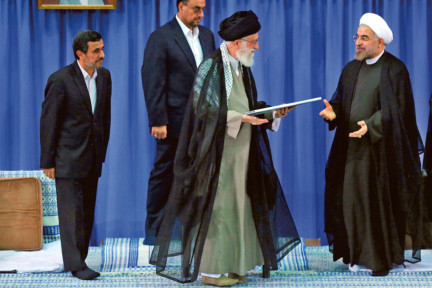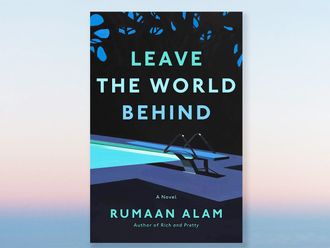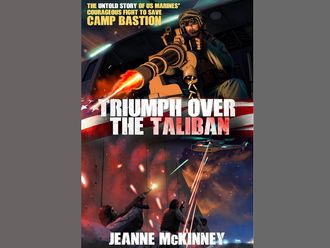
The nuclear accord between Iran and the P5+1 (United States, Britain, France, Russia, China plus Germany), at its core, is an agreement between Iran and America. The overwhelming majority of western observers, particularly the Americans, believed that the conclusion of the nuclear deal would create an unprecedented opportunity for broader engagement between the two states.
Interestingly, the formation of the deal coincided with the emergence and rise of Daesh (the self-proclaimed Islamic State of Iraq and the Levant), a radical extremist force that threatened the security interests of both Iran and the US. In this context, the ground for advancing ties was ripe and exceptional.
What had significantly added to the experts’ optimism was a statement made in April by Ayatollah Khamenei, Iran’s Supreme Leader, that “if the other side [the US] avoids misbehaviour in the talks, it’ll be an experience showing it’s possible to negotiate with them on other issues”.
However, Khamenei’s speech on October 7 took the issue of US-Iran reconciliation off the table, at least for the foreseeable future. “Talks with America are forbidden,” he remarked. The speech was delivered after the New York trip of Iranian President Hassan Rouhani and his Foreign Minister, Mohammad Javad Zarif, to take part in the annual meeting of the United Nations General Assembly. The speech was most likely a reaction to what had happened in New York during Rouhani and Zarif’s stay there.
On September 25, Rouhani met journalists and on September 27 he met American think tanks, academics and NGOs. In those meetings, he clearly suggested that the reconciliation process between Iran and the US was on its way.
In his first meeting, he noted that in both Iran and the US there were people who wished to keep hostilities alive, but emphasised that neither country could afford to live in the past. He said: “If we continue this animosity, this tension, what is the result? Have a war? ... We must think of the future. A renewal of tension and animosity will not benefit anyone.”
Suggesting a great deal of optimism about the improvement of Iran-US relations, he added: “Today, these conditions [for Iran-US relations] are different from what they were two years ago, prior to my election. No one could have thought, prior to that, that ... the foreign ministers of Iran and the United States would sit across from one another for — not just days — but weeks or months.”
In his second meeting, he asserted: “But for us to think that until the end of the world, this animosity and tension between, and lack of relations between, the two countries will continue — that is an impossibility.”
Besides these statements, Zarif’s handshake with and greeting of US President Barack Obama in an accidental encounter at the UN created ripples of anxiety in the conservative camp where Khamenei’s base is.
Iran’s supreme leader could not ignore the tsunami created by the nuclear deal, because its force was pushing Iran and the US closer to each other. After almost three decades of spearheading a struggle against the “global arrogance led by America”, his silence could have resulted in heavy damage to his stature among his followers, both inside Iran and within the region.
There were other significant factors behind the irreconcilable stance he adopted in his October 7 speech. He argued that “negotiating with them [Americans] means opening the way for their penetration in economic, cultural, political, and security areas ... Today, an important chapter of the activities of the enemies of the Islamic Republic is ... tampering with the beliefs and values that hold society up”.
Khamenei’s speech underscored his concern about the eventual outcome of the negotiations with the Americans. And he is correct.
America’s pop culture and economy are two major elements of its soft power. These two features greatly help the US expand and solidify its influence globally. Therefore, Khamenei’s concern is two-fold. First, US economic power and penetration in the Iranian market will “lead to political influence”. This could undermine the conservatives’ grip on power and ultimately erode his authority.
Second, for better or worse, American pop culture has a special attraction for the youth living in developing countries and Iran is no exception. In that culture, for example, there is no place for unconditionally obeying the authority of the “absolute guardianship of the jurist” or accepting the imposition of religious codes such as the hijab (women’s veil).
These are his deep concerns about the penetration of American culture. Against those who argue that development and progress would be a daunting task while taking such a hostile posture towards America, Khamenei argues that “we should rely on our domestic capabilities and capacities”.
In the last three decades, the relationship with the US has been at the centre of the conflict between two camps in Iran: The conservatives, represented by Khamenei; and the moderates, represented by the former president, Akbar Hashemi Rafsanjani.
Rafsanjani’s insistence on restoring relations with the US dates back to 30 years ago when Iran’s leader of the revolution, Ayatollah Khomeini, was alive. At that juncture, when most would hardly dare talk about restoring relations with the US, Rafsanjani wrote a letter to Khomeini and warned him that “not to talk or [not] have any relations with America is not sustainable”.
During his presidency (1989-1997), while Khamenei dictated the doctrine of “the West minus the United States”, Rafsanjani repeatedly attempted to reconcile US–Iran relations. Most interesting among those efforts were the back-door negotiations between Iran and the US in which Germany’s then chancellor Helmut Kohl, urged by the Rafsanjani administration, became involved. Kohl was eventually turned down by the Clinton administration.
The question now is why Khamenei regards Americans as a monumental threat to the survival of the establishment, while Rafsanjani, as the leading figure of the moderates and his followers — namely Rouhani — views relations with America as not only safe but beneficial.
The answer is that Rafsanjani firmly believes that a lack of relations with and the continuation of hostilities towards the US will not only provoke that country to destabilise the Iranian establishment, but it will also result in enormous economic and political pressures.
Continuation of hostilities — especially the resulting economic pressures — will lead people to turn their back on the government and adopt a hostile position. In Rafsanjani’s eyes: “There is no expediency above people’s opinion and attracting their satisfaction for the longevity and stability of the country.” It was in this context that he told Khomeini that lack of relations with the US was not sustainable.
Shahir ShahidSaless is a political analyst and freelance journalist writing primarily about Iranian domestic and foreign affairs. He is also the co-author of Iran and the United States: An Insider’s View on the Failed Past and the Road to Peace, published in May 2014. He lives in Canada.










